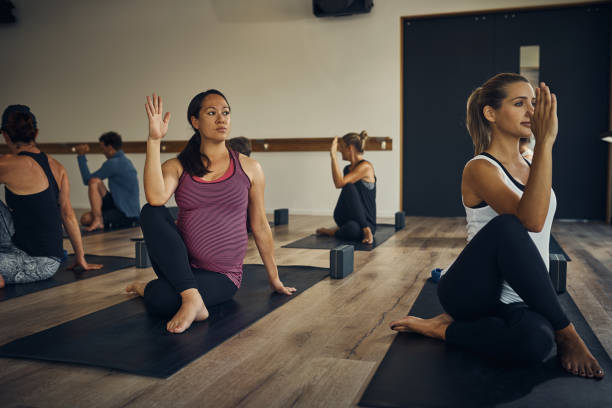
Introduction
Do you suffer from back pain? You’re not alone. Back pain is one of the most common medical problems, impacting millions of people around the world. Fortunately, back pain can be managed and even improved with the right lifestyle changes. Physical activities help to reduce back pain and help to prevent it.
Physical activity is defined as any bodily movement produced by skeletal muscles that result in energy expenditure. Physical activity includes activities of daily living, such as walking, housework, gardening, and work-related activities. Here are 10 activities to incorporate into your daily routine:
10 Exercises for Lower Back Pain
- Take a Walk: Taking a walk is one of the best exercises for back pain relief since it strengthens the back muscles while improving flexibility. A brisk 20-minute walk every day can do wonders for reducing
back pain and improving your overall health. - Stretch Your Back Muscles: Stretching the back muscles helps improve circulation in your spine, which helps restore strength and mobility. Specialized back stretches should be done regularly to keep back muscles flexible and relaxed, which will reduce inflammation and alleviate existing back pain.
- Strengthen Your Core Muscles: Having strong back muscles is essential for good back health, and the focus should be on strengthening your core muscles. There are many exercises that can be done to work out the back muscles; planks, bridges and squats are some of the most effective ones.
- Practice Good Posture: Slouching or sitting in awkward positions can cause back pain, so it’s important to practice good posture throughout the day. Sitting up straight with your back against a chair and feet flat on the floor will help keep your spine aligned properly and reduce back pain.
- Use Proper Lifting Techniques: Improper lifting techniques can lead to back pain and injury. When lifting objects, it’s important to keep your back straight and use your legs to do the work. Don’t twist or bend over when lifting heavy items; instead, keep your back straight while using a squatting motion with the legs.
- Take Breaks: Taking frequent breaks throughout the day can help reduce back pain. When sitting for long periods of time, get up every 20 minutes and move around to allow the back muscles to relax and stretch properly.
- Practice Mindfulness Meditation: Practicing mindfulness meditation can be helpful in reducing back pain as it helps relax tense back muscles and promotes relaxation throughout the body. It’s also a great way to relieve stress which can often make back pain worse.
- Get Enough Sleep: Getting enough restorative sleep can help reduce back pain since the muscles are able to relax and heal while you sleep. Make sure to keep your back properly supported when sleeping by using a firm mattress and pillow.
- Exercise Regularly: Exercise helps keep our bodies strong and flexible—both important elements in back health. Stretching exercises that focus on improving flexibility can also help reduce back pain. Be sure to check with your doctor before beginning an exercise program so they can recommend appropriate exercises for your level of back discomfort or injury.
- Massage Your Back Muscles: Regular massage therapy helps relax tense back muscles and improve circulation in the back area which can help with back pain relief. It’s best to book regular massage sessions with a qualified therapist for optimal results.
By incorporating these 10 activities into your daily routine, you can reduce back pain and improve overall back health. Talk to your doctor about any back pain you’re experiencing to get a personalized treatment plan for your back pain.
How to Reduce Back Pain with Routine Activities?
Making small changes in your routine can prove significant to prevent and reduce back pain. Follow these activities consistently to keep back pain at bay.
- Wear appropriate shoes: Cushioned soles reduce the impact when you’re walking on hard surfaces. This helps protect your back, hips, and knees.
- Sit properly: Make sure your chair has a straight back, an adjustable seat, and armrests. If you need extra support, using a posture brace can be helpful. Resting your feet on a low stool can also help ease back pain when sitting.
- Sleep Position: Memory foam helps distribute weight evenly and reduce back strain when sleeping, thus decreasing back pain.
- Adjust Your Driving Position: Move your seat forward so you don’t have to bend to reach the steering wheel. Put a rolled towel, small pillow, or other lumbar support behind your lower back. Take a break every hour on long trips to get out of the car and walk around.
- Practice Good Phone: Posture Your shoulder may make a great phone rest when you need to multitask in a pinch. But this posture is a common cause of neck pain and can also contribute to poor alignment in the back. When you need to make a hands-free call, use a shoulder support, headset, or speaker function on your phone instead.
Conclusion
Regular exercise and minor lifestyle sustainable changes will be of benefit to your health including reducing back pain. With activity, you will look and feel better.
Join us and help create a pain-free world!
-
Countered Lumbar Sacro Belt
£28.99 Select options This product has multiple variants. The options may be chosen on the product page -
Posture Brace
£24.99 Select options This product has multiple variants. The options may be chosen on the product page -
Back Support/Lumbar Corset Belt
£14.99 Select options This product has multiple variants. The options may be chosen on the product page




